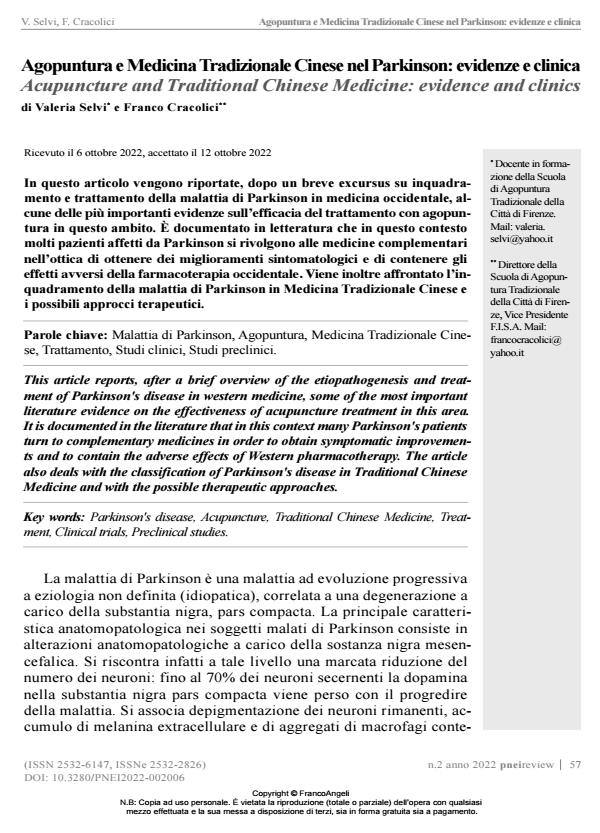Acupuncture and Traditional Chinese Medicine: evidence and clinics
Journal title PNEI REVIEW
Author/s Valeria Selvi, Franco Cracolici
Publishing Year 2022 Issue 2022/2
Language Italian Pages 9 P. 57-65 File size 92 KB
DOI 10.3280/PNEI2022-002006
DOI is like a bar code for intellectual property: to have more infomation
click here
Below, you can see the article first page
If you want to buy this article in PDF format, you can do it, following the instructions to buy download credits

FrancoAngeli is member of Publishers International Linking Association, Inc (PILA), a not-for-profit association which run the CrossRef service enabling links to and from online scholarly content.
This article reports, after a brief overview of the etiopathogenesis and treat- ment of Parkinson's disease in western medicine, some of the most important literature evidence on the effectiveness of acupuncture treatment in this area. It is documented in the literature that in this context many Parkinson's patients turn to complementary medicines in order to obtain symptomatic improvements and to contain the adverse effects of Western pharmacotherapy. The article also deals with the classification of Parkinson's disease in Traditional Chinese Medicine and with the possible therapeutic approaches.
Keywords: Parkinson's disease, Acupuncture, Traditional Chinese Medicine, Treat- ment, Clinical trials, Preclinical studies
Valeria Selvi, Franco Cracolici, Agopuntura e Medicina Tradizionale Cinese nel Parkinson: evidenze e clinica in "PNEI REVIEW" 2/2022, pp 57-65, DOI: 10.3280/PNEI2022-002006